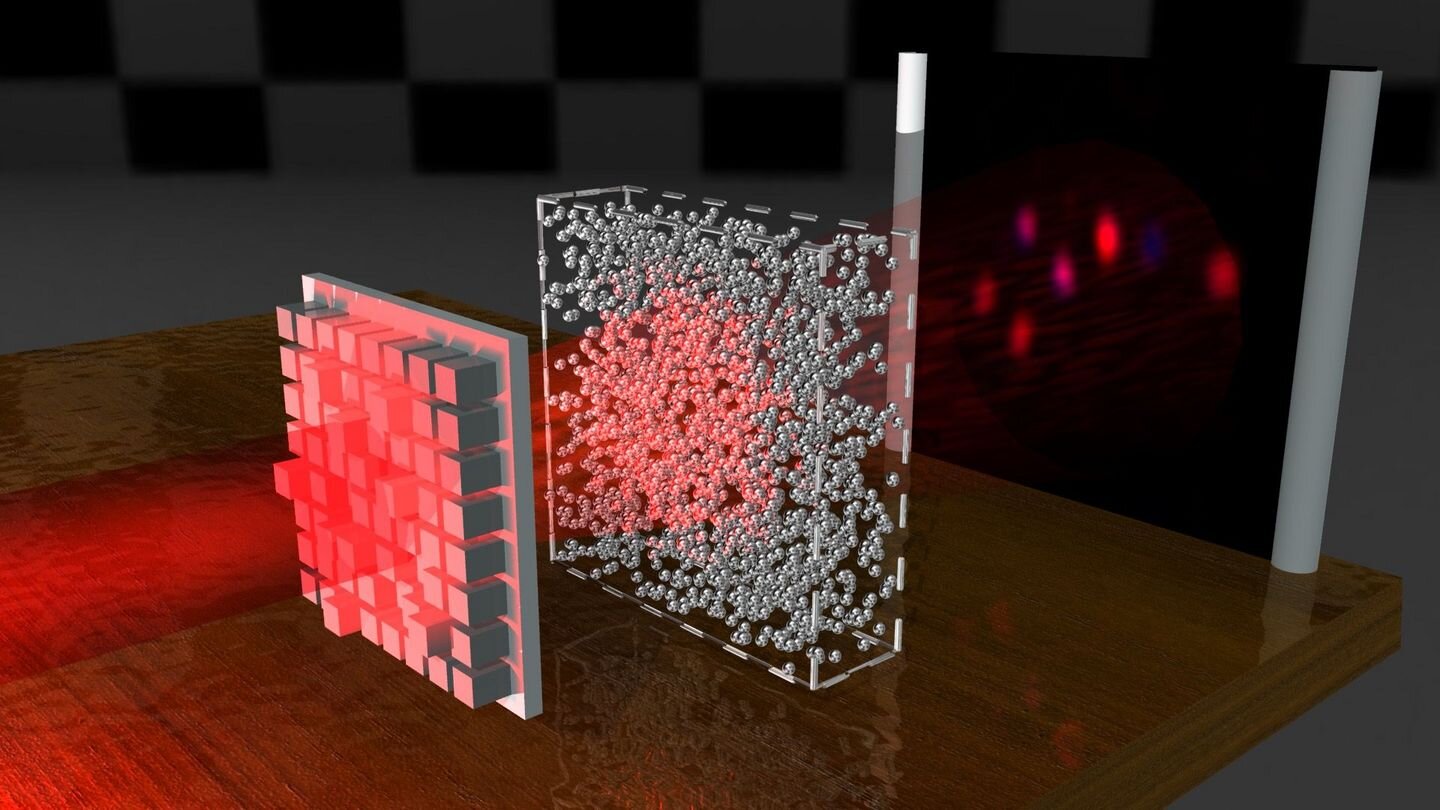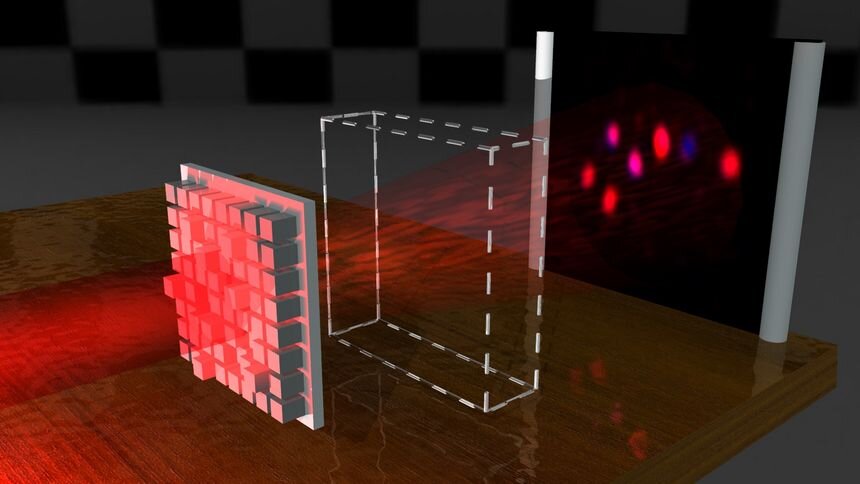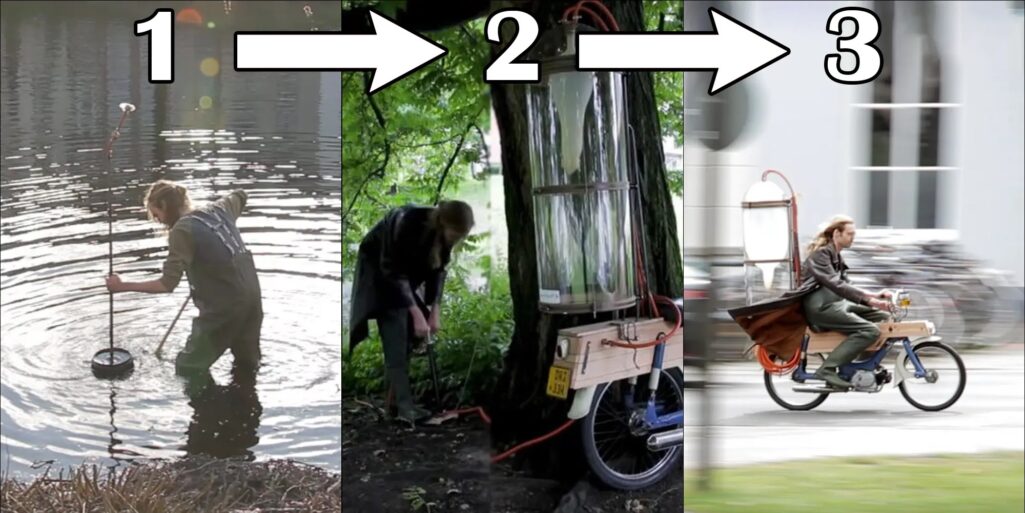
What’s the deal with sugar not being transparent? Since light passing through a piece of sugar is dispersed, distorted, and deflected in a complex manner. However, as a research team from TU Wien (Vienna) and Utrecht University (Netherlands) has now shown, there is a class of very particular light waves for which this may not apply: for any unique disordered medium, such as the sugar cube you might have just placed in your coffee, tailored light beams can be built that are basically not modified, but rather attenuated by this medium. The light beam passes into the medium and emerges on the other side in the same form as if the medium had never existed.
The concept of “scattering-invariant modes of light” can also be applied to investigating objects’ interiors. The findings have recently been published in Nature Photonics.
There is an infinite number of potential wave modes
Similarly, as waves on a turbulent water surface can take on an infinite number of different shapes, light waves can take on an infinite number of different forms. “Each of these light wave patterns is changed and deflected in a very specific way when you send it through a disordered medium,” says Prof. Stefan Rotter of the Institute of Theoretical Physics at TU Wien.
Stefan Rotter is working on mathematical models to explain light scattering effects with his colleagues. Prof. Allard Mosk’s team at Utrecht University provided the skills needed to create and describe those dynamic light fields. “As a light-scattering medium, we used a layer of zinc oxide, an opaque, white powder of completely randomly arranged nanoparticles,” says Allard Mosk, the experimental research group’s leader.
To begin, you must precisely define this layer. You send very precise light signals via the zinc oxide powder and monitor how they reach the detector behind it. You will then deduce how every other wave is affected by this medium. You can also quantify which wave pattern is affected by this zinc oxide layer as if wave scattering were completely absent in this layer.
“As we were able to demonstrate, there is a very special class of light waves known as scattering-invariant light modes,” says Stefan Rotter, “that produce exactly the same wave pattern at the detector regardless of whether the light wave was only sent through the air or had to penetrate the complicated zinc oxide layer.” “In the experiment, we see that the zinc oxide actually does not change the shape of these light waves at all; they just get a little weaker overall,” Allard Mosk explains.

At the light detector, there’s a stellar constellation
With the potentially infinite number of potential light waves, one can always find all of these scattering-invariant light forms, no matter how unique and unusual they are. You can get a scattering-invariant waveform by combining some of these scattering-invariant light modes in the right direction.
“In this way, at least within certain limits, you are quite free to choose which image you want to send through the object without interference,” says Jeroen Bosch, a Ph.D. student who worked on the experiment. “For the experiment, we used the Big Dipper as an example constellation. Indeed, regardless of whether the light wave is scattered by the zinc oxide layer or not, it was possible to determine a scattering-invariant wave that gives a picture of the Big Dipper to the detector. In all cases, the light beam is almost identical to the detector.”
An inside view at the cell
This method of detecting light patterns that pass through an area relatively unscathed may be used in imaging procedures. “X-rays are used in laboratories to see through the body because they have a shorter wavelength and can reach our skin. However, not just the wavelength, but also the waveform, determine how a light wave penetrates an object, “Matthias Kühmayer, a Ph.D. student working on computer models of wave propagation, agrees. “Our approach opens up whole new possibilities if you want to concentrate light inside an object at specific points. We were able to demonstrate that the light distribution within the zinc oxide layer can be precisely regulated using our method.” This may be useful in biological studies where you want to inject light at very precise points to see deep into cells.
The joint publication of scientists from the Netherlands and Austria demonstrates how important international collaboration between theory and experiment is for advancement in this field of study.




